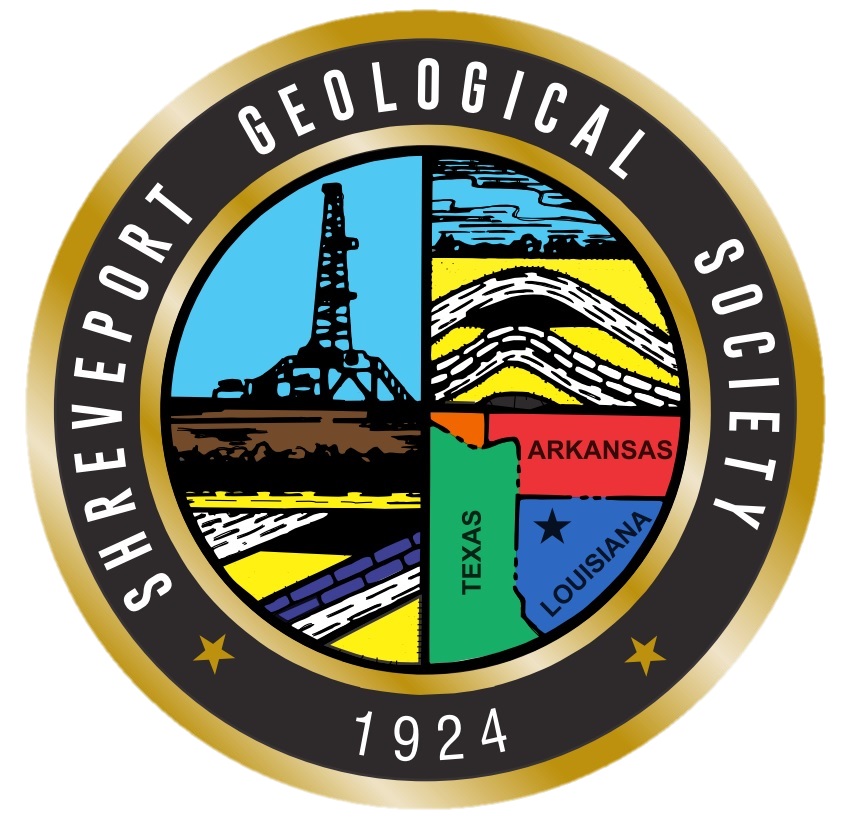Virtual
Where: Zoom
Cost: $10
If you’d like to attend virtually, please pay with a credit card below and use the email address where you would like Zoom login details sent.
In-Person
Where: The Petroleum Club of Shreveport, 15th floor
Cost: $20, Children 10 and under $8
If you’d like a seat, kindly use the form below to make your reservation by the preceding Friday.
We encourage members to invite guests, spouses, and friends to any of our meetings.
Biography
Chris Sumner received his B.S. degrees from LSU and MSc from University of London (grad work at SFA). While at LSU Chris took part in a joint geologic research program between Louisiana State University and East Chinese Institute of Technology in Jiangxi Province, Southeastern China. This study examined large scale fold and thrust systems in the South China suture zone between the Cathyasia block and Yangtze Craton. Following Graduation, he worked several jobs in the oil and gas industry.
In 2008, Chris went to work as a Field Engineer for Halliburton Stimulation services in the Rocky Mountain Division. Primarily fracturing services in Power River Basin.
In 2009 following a down-turn in Wyoming he returned to North Louisiana and worked for a consulting firm on behalf of Petro Hawk.
Following the week of April 20, 2010, Chris went to work for Cardno on behalf of BP and lead a Marine Assessment team during the Macondo blow out in Gulf of Mexico. During this 3-year project, Chris assisted in response operations to the blow out which included well control, data management, seismic/acoustic surveys and wet chemistry.
In 2011, Chris was still consulting for Cardno and began a full-time position back in Louisiana for Bayou State Oil Corporation and is now the current Geologist and drilling superintendent. In the last ten years has drilled and developed specialized completion techniques for the Nacatoch “A Sand”. Including work in the Bellevue EOR Project. In addition, has research and developed several Helium finds in the Southwest United States in the last 5 years.
Abstract
“Geology of Bellevue Salt Dome and EOR Overview -
A regional view of the past, present and what is needed in the future.”
The Bellevue Field is located in Bossier Parish, in Northwest Louisiana. The Field is comprised of producing zones which are upper cretaceous in age. The vertical movement of this formation in the Bellevue Field is an anomaly, due to field wide uplift. The overall structure of the field is a low domal feature which was induced by the North Louisiana salt deposits and the Sabine Uplift. The “Bellevue Salt Dome “as it is referred to locally, is a dome that has lifted the Nacatoch Formation to an interval between 300' - 400' (feet) below the surface. In the rest of the surrounding areas the Wilcox and Arkadelphia formations that are normally above the Nacatoch, are non-existent. Only 40 miles away the Nacatoch formation is at a depth of 1000-1200'.
The Sabine Uplift if an area approximately eighty miles long and sixty-five miles in maximum width, situated in the northwestern corner of Louisiana and in the adjacent portion of Texas (Powers, 1921). The Sabine uplift helps the overall geology for the Caddo Pine Island Basin and the Bellevue Field, structurally and stratigraphically. In the coastal plain environment, the Sabine Uplift is the largest regionally. The Sabine Uplift is believed to be a positive element in the earth’s crust which reflects isostatic conditions in the rocks beneath the Coastal Plain sediments (Powers, 1921). The Nacatoch sand which is above the Annona Chalk has the best-defined sand on the entire Sabine Uplift. Moving away from the uplift to the East, (Monroe Field) the Nacatoch is directly on top of the Annona Chalk. Whereas in the heart of the uplift, the two formations are separated by several hundred feet. This goes to show that the Sabine Uplift has greatly influenced Caddo Pine Island and Bellevue Field unique structures but is not the only force at work. This study ties in overall regional geology including halokinetics (North Louisiana Salt Dome Basin), the Sabine uplift, possible igneous intrusions that have significantly influenced the Bellevue field.







































